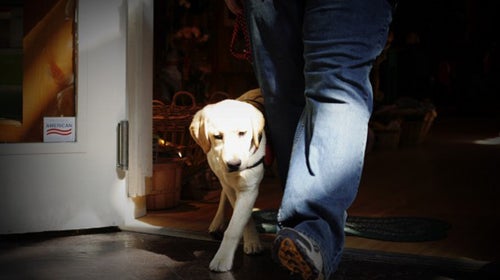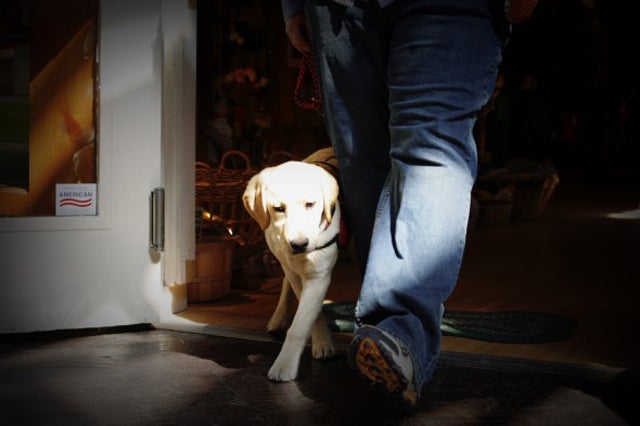As a novice dog trainer, I had a pretty skewed perception of what would be easy to train and what would be hard. All of the experts, books, and DVDs I consulted recommended spending a lot of time (like 80 percent for the first six months) on obedience. It’s not just that basic obedience is the foundation that you build all other skills on, it’s that it requires the most training. The difference between learning a skill and training it to a habit is huge. We’ve said it before: It takes about a thousand repetitions with increasing levels of distraction to get there with any skill. If you keep a detailed training log (I wish I had started earlier), you’ll see that six months is a reasonable goal.
The Ultimate ���ϳԹ��� Companion
All you need to know about going wild with man’s best friend.Here’s a list of basic skills in order from hardest to easiest:
HARDEST
1. Recall: Seems like it should be easy. Your dog loves you, right? Maybe in your house or yard, but good luck calling him off a squirrel or another dog on the first try. Train every day.
2. Heel: Similar to recall, getting a young pup to focus on you while the sights and smells of the world pass by is really hard. Or, rather, it’s going to take a lot of pracitce. When you’re really nailing it, the dog should make frequent eye contact and avoid any sniffing. On your first walk in the park, you may only make it 30 feet. That’s fine as long as you get a good heel for all 30 feet. I really liked the segment on loose leash walking (a less formal version of heeling) in the DVD for training the skill with a clicker, which requires no force on your part.
3. Leave It: Getting your dog to look up and make eye contact when food is dropped on the floor is one thing. Getting him to focus on you as another dog walks by in the park is another—especially if your dog is a greeter like mine. Here, you’re asking him to override his doggy instincts. That’s hard.
4. Stay: This one’s tricky because it’s got a big built-in distraction: duration. At home, Danger would much rather be cruising the kitchen looking for scraps or in the bathroom eating toilet paper than confined to his dog bed. Initially, I set boundaries: You will stay on that bed or I will put you back on that bed. That led to a lot of torn clothing and staredowns (he ain’t mean, but he sure is stubborn). Lately, I’ve been using a clicker and treats and upping the duration in small increments. Instead of confinement, he’s starting to see his bed as a way to earn treats. We’re only up to 30 seconds, but it’s a lot easier on both of us.
5. Wait: This is a big one for safety. A dog that leaps as soon as the tailgate is dropped or a door is opened is much more likely to end up as roadkill. My big mistake on this one was thinking that having him sit or wait at a door every time we happened to be going through it amounted to training. Not so. Doing one repetition twice a day is testing your dog. To train a skill, you’ve got to walk in and out of a door 10 times in rapid succession. Then go to the tailgate and drop it 10 times, until you’re getting a consistent wait response.
EASIER
6. Hold: This one depends a lot on the dog. Danger never minded having objects placed in his mouth. The trick is increasing the duration slowly and getting him to hold a bumper or object as he’s running in at top (OK, usually he jogs) speed.
7. Specific tasks like Target, Push, and Tug: Finite tasks—my housemate calls them tricks—are fun for the dog. After Danger reached fluency with these, earning treats for each good performance, the task itself started to become a reward. You can see the crossover moment when you train. One rep, he’s nosing a drawer shut haphazardly, the next he’s slamming it shut like he’s spiking a football.
EASIEST
8. Sit and Down: Please, people, child’s play.
9. Retrieve: I spent a lot of time trying to “teach” Danger to retrieve. I subscribed to a magazine called Gun Dog that said I was supposed to dangle a dead pigeon in front of him when he was five weeks old to make him birdy. But if you had to make your dog want to chase stuff, then #1 up there wouldn’t be so dang hard. For most dogs, retrieving isn’t a task at all, it’s a reward (though delivery to hand will probably take a bit of shaping).
This article originally appeared on ���ϳԹ��� K9, the former dog blog of ���ϳԹ��� magazine, on March 31, 2009.


